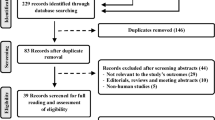Abstract
The GOOD survey investigated the global cardiometabolic risk profile in adult patients with hypertension across 289 sites in four European regions (Northwest, Mediterranean, Atlantic European Mainland and Central Europe). Demographic, lifestyle, clinical and laboratory data were collected from eligible patients (n=3370) during a single clinic visit. In Central Europe, represented by Hungary, 44% of the participants had type II diabetes compared with 33% in the Atlantic European Mainland, and 26% in the Northwest and the Mediterranean regions. The prevalence of metabolic syndrome was also significantly higher in Central Europe (68%) and the Atlantic European Mainland (60%) than in the Northwest and the Mediterranean regions (50 and 52%, respectively). Fasting blood glucose, total cholesterol and triglyceride levels were all highest in Central Europe compared with the other three regions (P<0.001). In the Atlantic European Mainland, more patients had uncontrolled blood pressure (80%) compared with the other three regions (70–71%). Declared alcohol consumption was highest in the Atlantic European Mainland and exercise lowest in Central Europe. The prevalence of congestive heart failure, left ventricular hypertrophy, coronary artery disease and stable/unstable angina was higher in Central Europe compared with the other regions, whereas a family history of premature stroke or myocardial infarction, stroke, coronary revascularization and transient ischaemic attacks was all highest in the Atlantic European Mainland. These data indicate that many hypertensive patients across Europe have multiple cardiometabolic risk factors with the prevalence higher in Central Europe and the Atlantic European Mainland compared with Northwest and Mediterranean regions.
This is a preview of subscription content, access via your institution
Access options
Subscribe to this journal
Receive 12 digital issues and online access to articles
$119.00 per year
only $9.92 per issue
Buy this article
- Purchase on Springer Link
- Instant access to full article PDF
Prices may be subject to local taxes which are calculated during checkout

Similar content being viewed by others
References
Hajjar I, Kotchen JM, Kotchen TA . Hypertension: trends in prevalence, incidence, and control. Annu Rev Public Health 2006; 27: 465–490.
Lewington S, Clarke R, Qizilbash N, Peto R, Collins R . Prospective Studies Collaboration. Age-specific relevance of usual blood pressure to vascular mortality: a meta-analysis of individual data for one million adults in 61 prospective studies. Lancet 2002; 360: 1903–1913.
Chobanian AV, Bakris GL, Black HR, Cushman WC, Green LA, Izzo Jr JL et al. The Seventh Report of the Joint National Committee on Prevention, Detection, Evaluation, and Treatment of High Blood Pressure: the JNC 7 report. Hypertension 2003; 42: 1206–1252.
Hajjar I, Kotchen TA . Trends in prevalence, awareness, treatment, and control of hypertension in the United States, 1988–2000. JAMA 2003; 290: 199–206.
Fodor JG, Lietava J, Rieder A, Sonkodi S, Stokes H, Emmons T et al. Work-site hypertension prevalence and control in three Central European Countries. J Hum Hypertens 2004; 18: 581–585.
Psaltopoulou T, Orfanos P, Naska A, Lenas D, Trichopoulos D, Trichopoulou A . Prevalence, awareness, treatment and control of hypertension in a general population sample of 26 913 adults in the Greek EPIC study. Int J Epidemiol 2004; 33: 1345–1352.
Rywik SL, Williams OD, Pajak A, Broda G, Davis CE, Kawalec E et al. Incidence and correlates of hypertension in the Atherosclerosis Risk in Communities (ARIC) study and the Monitoring Trends and Determinants of Cardiovascular Disease (POL-MONICA) project. J Hypertens 2000; 18: 999–1006.
Foy CG, Foley KL, D′Agostino Jr RB, Goff Jr DC, Mayer-Davis E, Wagenknecht LE . Physical activity, insulin sensitivity, and hypertension among US adults: findings from the Insulin Resistance Atherosclerosis Study. Am J Epidemiol 2006; 163: 921–928.
Kannel WB . Risk stratification in hypertension: new insights from the Framingham Study. Am J Hypertens 2000; 13: 3S–10S.
Expert Panel on Detection, Evaluation, and Treatment of High Blood Cholesterol in Adults. Executive Summary of The Third Report of The National Cholesterol Education Program (NCEP) Expert Panel on Detection, Evaluation, And Treatment of High Blood Cholesterol In Adults (Adult Treatment Panel III). JAMA 2001; 285: 2486–2497.
Grundy SM, Brewer Jr HB, Cleeman JI, Smith Jr SC, Lenfant C . American Heart Association; National Heart, Lung, and Blood Institute. Definition of metabolic syndrome: Report of the National Heart, Lung, and Blood Institute/American Heart Association conference on scientific issues related to definition. Circulation 2004; 109: 433–438.
International Diabetes Federation. Backgrounder 1: The IDF consensus worldwide definition of the metabolic syndrome. Available at: http://www.idf.org/webdata/docs/MetSyndrome_FINAL.pdf. Site accessed November 1st 2006.
Isomaa B, Almgren P, Tuomi T, Forsen B, Lahti K, Nissen M et al. Cardiovascular morbidity and mortality associated with the metabolic syndrome. Diabetes Care 2001; 24: 683–689.
Bonora E, Formentini G, Calcaterra F, Lombardi S, Marini F, Zenari L et al. HOMA-estimated insulin resistance is an independent predictor of cardiovascular disease in type 2 diabetic subjects: prospective data from the Verona Diabetes Complications Study. Diabetes Care 2002; 25: 1135–1141.
Malik S, Wong ND, Franklin SS, Kamath TV, L′Italien GJ, Pio JR et al. Impact of the metabolic syndrome on mortality from coronary heart disease, cardiovascular disease, and all causes in United States adults. Circulation 2004; 110: 1245–1250.
Ninomiya JK, L′Italien G, Criqui MH, Whyte JL, Gamst A, Chen RS . Association of the metabolic syndrome with history of myocardial infarction and stroke in the Third National Health and Nutrition Examination Survey. Circulation 2004; 109: 42–46.
Ford ES . Risks for all-cause mortality, cardiovascular disease, and diabetes associated with the metabolic syndrome: a summary of the evidence. Diabetes Care 2005; 28: 1769–1778.
Galassi A, Reynolds K, He J . Metabolic syndrome and risk of cardiovascular disease: a meta-analysis. Am J Med 2006; 119: 812–819.
Verdecchia P, Reboldi GP . Hypertension and microalbuminuria: the new detrimental duo. Blood Pressure 2004; 13: 198–221.
Perlstein TS, Gumieniak O, Williams GH, Sparrow D, Vokonas PS, Gaziano M . Uric acid and the development of hypertension: the normative aging study. Hypertension 2006; 48: 1031–1036.
Orchard TJ, Stevens LK, Forrest KY, Fuller JH . Cardiovascular disease in insulin dependent diabetes mellitus: similar rates but different risk factors in the US compared with Europe. Int J Epidemiol 1998; 27: 976–983.
Ginter E . Cardiovascular risk factors in the former communist countries. Analysis of 40 European MONICA populations. Eur J Epidemiol 1995; 11: 199–205.
Cottel D, Dallongeville J, Wagner A, Ruidavets JB, Arveiler D, Ferrieres J et al. The North-East-South gradient of coronary heart disease mortality and case fatality rates in France is consistent with a similar gradient in risk factor clusters. Eur J Epidemiol 2000; 16: 317–322.
Stegmayr B, Vinogradova T, Malyutina S, Peltonen M, Nikitin Y, Asplund K . Widening gap of stroke between east and west. Eight-year trends in occurrence and risk factors in Russia and Sweden. Stroke 2000; 31: 2–8.
Kjeldsen S, Naditch-Brule L, Perlini S, Zidek W, Farsang C . Increased prevalence of metabolic syndrome in uncontrolled hypertension across Europe: the GOOD survey. J Hypertens 2008; 26: 2064–2070.
Olsen MH, Wachtell K, Bella JN, Palmieri V, Gerdts E, Smith G et al. Albuminuria predicts cardiovascular events independently of left ventricular mass in hypertension: a LIFE substudy. J Hum Hypertens 2004; 18: 453–459.
Ibsen H, Olsen MH, Wachtell K, Borch-Johnsen K, Lindholm LH, Mogensen CE et al. Reduction in albuminuria translates to reduction in cardiovascular events in hypertensive patients: losartan intervention for endpoint reduction in hypertension study. Hypertension 2005; 45: 198–202.
Pedrinelli R, Giampietro O, Carmassi F, Melitto E, Dell’Omo G, Catapono G et al. Microalbuminuria and endothelial dysfunction in essential hypertension. Lancet 1994; 344: 14–18.
Boehm M, Thoenes M, Danchin N, Bramlage P, La Puerta P, Volpe M . Association of cardiovascular risk factors with microalbuminuria in hypertensive individuals: the i-SEARCH global study. J Hypertens 2007; 25: 2317–2324.
Mancia G, De Backer G, Dominiczak A, Cifkova R, Fagard R, Germano G et al. 2007 Guidelines for the Management of Arterial Hypertension: The Task Force for the Management of Arterial Hypertension of the European Society of Hypertension (ESH) and of the European Society of Cardiology (ESC). J Hypertens 2007; 25: 1105–1187.
Wang YR, Alexander GC, Stafford RS . Outpatient hypertension treatment, treatment intensification, and control in Western Europe and the United States. Arch Intern Med 2007; 167: 141–147.
Volpe M, Tocci G, Trimarco B, Rosei EA, Borghi C, Ambrosioni E et al. Blood pressure control in Italy: results of recent surveys on hypertension. J Hypertens 2007; 25: 1491–1498.
World Health Organization Regional Office for Europe 2007. http://www.euro.who.int/InformationSources/Data/20010827_1. Accessed October, 2008.
Acknowledgements
We acknowledge the contribution of the members of the Global CardiOMetabOlic Risk Profile in Patients with Hypertension Disease (GOOD) Scientific Council and the Study Investigators to this study. The study was designed interactively between an advisory board (later the authors of this paper) and sanofi-aventis and Bristol-Myers Squibb. The sponsor managed the data and did all the analysis but we had the right to request analysis and publish. P Milner, PhD, of PAREXEL, Uxbridge, UK is acknowledged for making the first draft of this paper, which has been further developed by us. The sponsor was given the opportunity to review and comment on the paper before submission.
Author information
Authors and Affiliations
Consortia
Corresponding author
Additional information
Conflict of interest
Csaba Farsang is a member of several scientific advisory boards (Pfizer, sanofi-aventis, Novartis, MSD, Richter GRt). Lisa Naditch-Brule is an employee of sanofi-aventis.
Rights and permissions
About this article
Cite this article
Farsang, C., Naditch-Brule, L., Perlini, S. et al. Inter-regional comparisons of the prevalence of cardiometabolic risk factors in patients with hypertension in Europe: the GOOD survey. J Hum Hypertens 23, 316–324 (2009). https://doi.org/10.1038/jhh.2008.136
Received:
Revised:
Accepted:
Published:
Issue Date:
DOI: https://doi.org/10.1038/jhh.2008.136
Keywords
This article is cited by
-
Metabolic syndrome and masticatory hypofunction: a cross-sectional study
Odontology (2021)
-
Pulse pressure and heart rate in patients with metabolic syndrome across Europe: insights from the GOOD survey
Journal of Human Hypertension (2013)
-
Cardiovascular risk factor(s) prevalence in Greek hypertensives. Effect of gender and age
Journal of Human Hypertension (2012)



